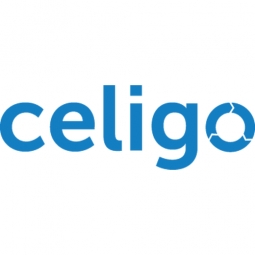下载PDF
Topo Designs Streamlines Inventory Management and Cuts Operational Costs by 30% with Celigo
技术
- 功能应用 - 企业资源规划系统 (ERP)
- 功能应用 - 库存管理系统
适用行业
- 服装
- 零售
适用功能
- 销售与市场营销
- 仓库和库存管理
用例
- 库存管理
- 拣选/分拣/定位
服务
- 系统集成
挑战
Topo Designs 是一家专门生产户外背包的公司,其老化的技术堆栈面临着重大挑战。尽管销售额实现了两位数增长,但该公司在准确的财务跟踪和库存管理方面遇到了困难。现有系统需要手动核对和键入来自不同来源的数据,从而导致不准确和低效率。该公司还存在订单和库存分配问题,有两名员工专门负责管理虚拟地点和库存转移。最重大的挑战是在整个退货过程中保持准确的库存水平。会计团队根据一般商品成本计算得出的估算往往偏差超过 30%,导致 Shopify 店面的商品列表不正确。由于平均每天有 500-3000 个订单,这种缺乏可见性的情况是不可持续的,导致订单未履行和 60 天的截止期。
关于客户
Topo Designs 是一家总部位于丹佛的公司,专门生产各种用途的背包,包括远足、旅行、学校和城市生活方式。该公司由 Jedd Rose 和 Mark Hansen 于 2008 年创立,其诞生的初衷是打造适合户外探险的背包。如今,Topo Designs 的产品销往全球,其设计继续从科罗拉多州的户外活动中汲取灵感。尽管销售额大幅增长,但该公司的技术堆栈仍面临挑战,特别是在财务跟踪和库存管理方面。
解决方案
为了应对这些挑战,Topo Designs 推出了强大的 ERP 系统 NetSuite,并将其与 Celigo 集成。该集成于 2020 年 1 月 1 日实施,团队首先使用 Celigo 的 Shopify-NetSuite 集成应用程序实现了订单到现金业务流程的自动化。这减少了错误,提高了效率,并改善了客户体验。该团队还通过 Celigo 的 Returnly-NetSuite 集成应用程序实现了逆向物流流程的自动化。这使得客户能够轻松退回产品,并在产品到达仓库后进行自动处理和信用发放。这些解决方案的实施不仅简化了公司的运营,还显着改善了后端流程。
运营影响
数量效益
相关案例.

Case Study
Fire Alarm System and Remote Monitoring Sytem
Fire alarm systems are essential in providing an early warning in the event of fire. They help to save lives and protect property whilst also fulfilling the needs of insurance companies and government departments.Fire alarm systems typically consist of several inter-linked components, such as smoke detectors, heat detector, carbon monoxide, manual call points, sounders, alarm and buzzer. The fire alarm system should give immediate information in order to prevent the fire spread and protect live and property.To get maximum protection a shoe manufacturer in Indonesia opted for a new fire alarm system to monitor 13 production sites spread over 160 hectars. Although the company had an existing fire alarm system, it could not be monitored remotely.It was essential that the new system would be able to be monitored from a central control room. It needed to be able to connect to the existing smoke detector and manual call point. Information should be easily collected and passed on to the Supervisory Control and Data Acquisition (SCADA) system. Furthermore, the system should have several features such as alarm management, auto reporting, being connected to many client computers without additional cost, and run 24/7 without fails. The company also needed a system which could be implemented without changing the architecture of the existing fire alarm system.

Case Study
IoT Applications and Upgrades in Textile Plant
At any given time, the textile company’s manufacturing facility has up to 2,000 textile carts in use. These carts are pushed from room to room, carrying materials or semi-finished products. Previously, a paper with a hand-written description was attached to each cart. This traditional method of processing made product tracking extremely difficult. Additionally, making sure that every cart of materials or semi-finished products went to its correct processing work station was also a problem. Therefore, the company desired an intelligent solution for tracking assets at their factories. They also wanted a solution that would help them collect process data so they could improve their manufacturing efficiency.

Case Study
Improving Production Line Efficiency with Ethernet Micro RTU Controller
Moxa was asked to provide a connectivity solution for one of the world's leading cosmetics companies. This multinational corporation, with retail presence in 130 countries, 23 global braches, and over 66,000 employees, sought to improve the efficiency of their production process by migrating from manual monitoring to an automatic productivity monitoring system. The production line was being monitored by ABB Real-TPI, a factory information system that offers data collection and analysis to improve plant efficiency. Due to software limitations, the customer needed an OPC server and a corresponding I/O solution to collect data from additional sensor devices for the Real-TPI system. The goal is to enable the factory information system to more thoroughly collect data from every corner of the production line. This will improve its ability to measure Overall Equipment Effectiveness (OEE) and translate into increased production efficiencies. System Requirements • Instant status updates while still consuming minimal bandwidth to relieve strain on limited factory networks • Interoperable with ABB Real-TPI • Small form factor appropriate for deployment where space is scarce • Remote software management and configuration to simplify operations

Case Study
How Sirqul’s IoT Platform is Crafting Carrefour’s New In-Store Experiences
Carrefour Taiwan’s goal is to be completely digital by end of 2018. Out-dated manual methods for analysis and assumptions limited Carrefour’s ability to change the customer experience and were void of real-time decision-making capabilities. Rather than relying solely on sales data, assumptions, and disparate systems, Carrefour Taiwan’s CEO led an initiative to find a connected IoT solution that could give the team the ability to make real-time changes and more informed decisions. Prior to implementing, Carrefour struggled to address their conversion rates and did not have the proper insights into the customer decision-making process nor how to make an immediate impact without losing customer confidence.

Case Study
Digital Retail Security Solutions
Sennco wanted to help its retail customers increase sales and profits by developing an innovative alarm system as opposed to conventional connected alarms that are permanently tethered to display products. These traditional security systems were cumbersome and intrusive to the customer shopping experience. Additionally, they provided no useful data or analytics.






